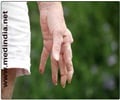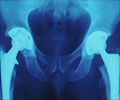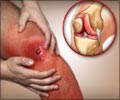Oligoarthritis - Clinical Features
- It is the most common and mild form of juvenile arthritis.
- It most commonly occurs between the age of 1 and 5 years.
- It is more likely to occur in young girls rather than young boys.
- Asymmetrical involvement of the joints is seen (Same joints are not involved).
- Children with Oligoarthritis are at an increased risk of developing inflammation of the inner eye (uveitis). Frequent, regular eye check up by an eye doctor is very vital to prevent permanent eye damage. Children who are tested positive for a blood antibody marker, called ‘anti-nuclear antibodies’ face an increased risk of developing uveitis and have to be monitored very closely.
- Limping may be seen in young children due to different rate of growth of bones of the two lower limbs.
Anemia may be seen in some cases.
The presence of infection or rash associated with arthritis should raise suspicion of polyarthritis that requires more aggressive treatment. As the disease progresses, it can lead to either of the conditions.
Persistent Oligoarthritis: If no additional joints are affected over a period of time, it is called as persistent Oligoarthritis. This condition is a milder version of the disease.
Extended Oligoarthritis: If more than 4 joints are additionally affected over time, the disease is now called extended oligoarthritis. This type of arthritis is more likely to occur in young girls rather than boys. Similar joints are affected ( on both sides) and there is an increased risk of developing eye problems (uveitis). Compared to children with Oligoarthritis, these children are more prone to developing chronic arthritis and hence need a more aggressive treatment.
Outlook of Children with Oligoarthritis
Children with Oligoarthritis have a good outlook compared to those who have other severe forms of arthritis. Most children with the disease cope fairly well. If proper care is instituted at an early age, the adverse effects of the disease process can be prevented. However, some children with Oligoarthritis have uneven length of legs due to varying rates of bone growth. The predisposition to inflammatory disease of the eye can cause blindness if left unattended. Pain is usually not seen, and this prevents the seeking of medical attention.
















